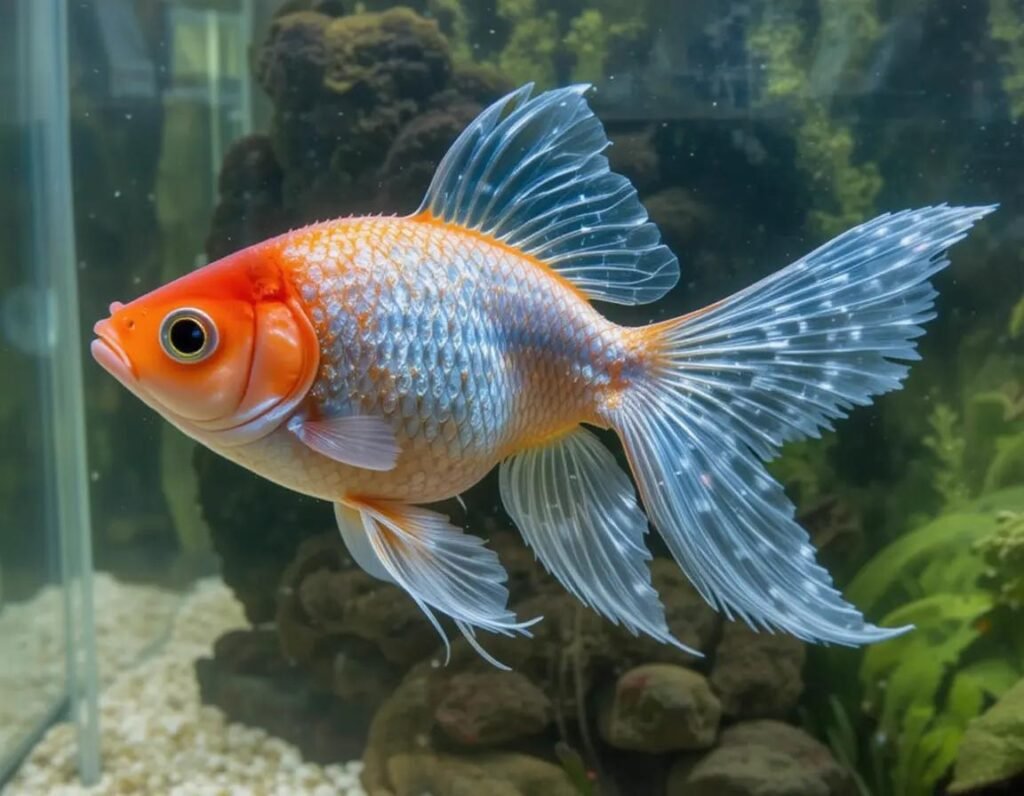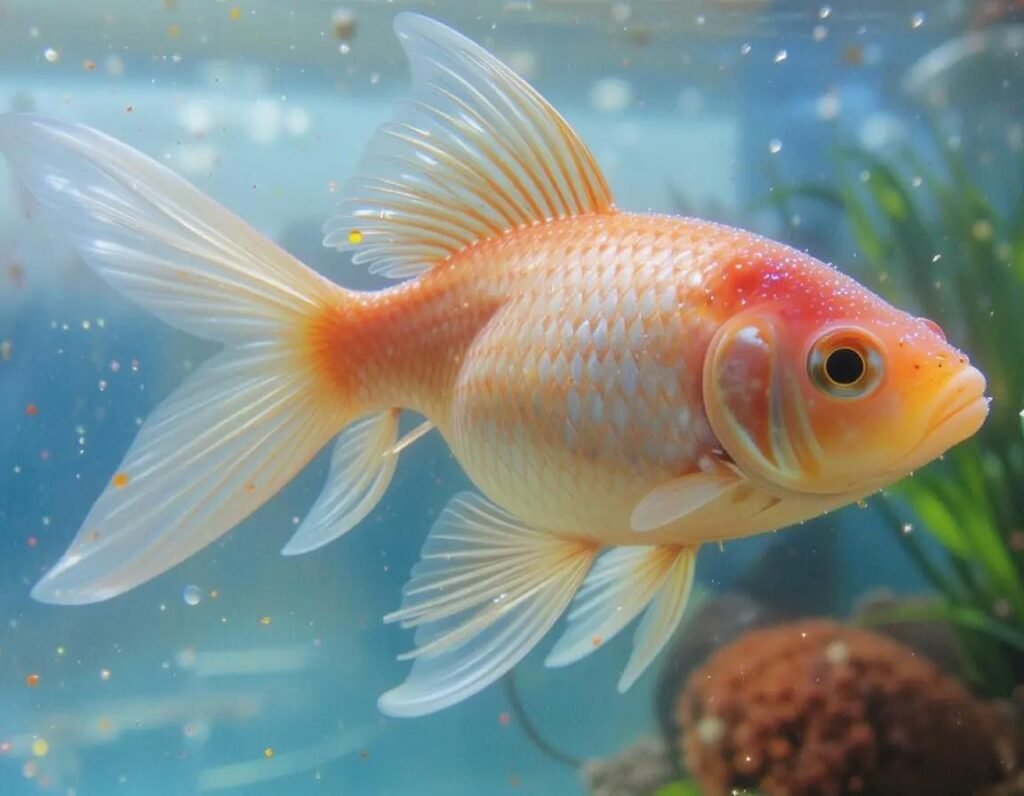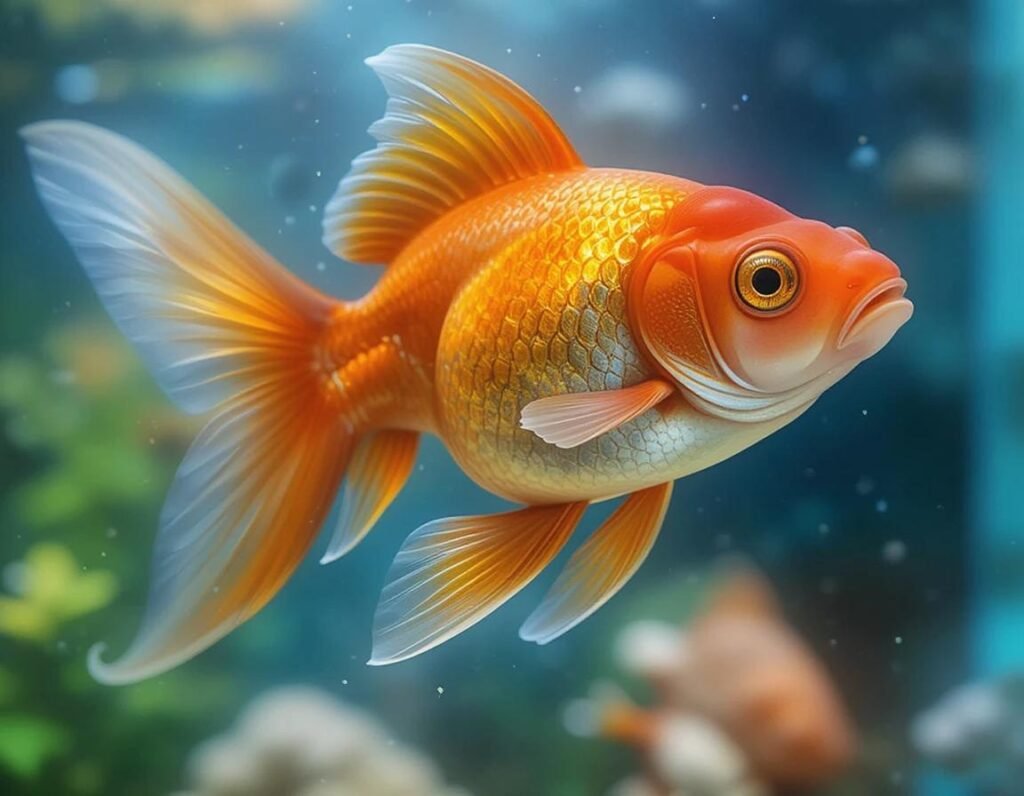
Goldfish Fin Rot Treatment: The Complete Guide to Getting Your Fish Back in Shape
If you’re a goldfish owner, there’s a good chance you’ve encountered a few bumps along the way—maybe it’s water quality issues, feeding troubles, or, unfortunately, fin rot. Don’t panic! Goldfish fin rot is a common condition, but with the right treatment, your finned friend can be back to their happy, swimming self in no time.
In this simple and friendly guide, we’ll walk you through what fin rot is, how to spot it, and how to treat it—because every goldfish deserves to swim with flair, not flopping fins!
What Is Goldfish Fin Rot?
Fin rot is exactly what it sounds like: a condition where the fins (or tail) of your goldfish start to deteriorate, often looking ragged, torn, or discolored. It’s usually caused by bacterial infections, though it can also occur due to poor water conditions or physical injuries. So, if your goldfish looks like it’s trying out the “punk rock” look with shredded fins, they might need your help to turn things around.
Signs of Fin Rot in Goldfish
How do you know if your goldfish has fin rot? Watch for these telltale signs:
- Tattered Fins: The edges of the fins or tail may start to fray or appear shredded. This can give them a “worn out” look, like they’ve been swimming in a rock concert pit.
- Discoloration: Fins may become pale, cloudy, or even blackened. It’s like your goldfish is getting a little too adventurous with their fashion choices—except it’s not fun if it’s a sign of an infection.
- Redness or Inflammation: If the base of the fin is red or swollen, it could indicate a bacterial infection that’s spreading. Your goldfish might look like they’ve been in the ring with a champion boxer—except this time, it’s not a fair fight.
- Lethargy: If your goldfish seems to be less energetic than usual, hanging out near the surface or hiding more often, it might be a sign they’re feeling under the weather.
- Loss of Appetite: A sudden drop in appetite is often a sign of distress. If your goldfish isn’t interested in food, something’s definitely off.
What Causes Fin Rot in Goldfish?
Fin rot is usually caused by bacterial infections, specifically Aeromonas or Pseudomonas bacteria. These nasty guys can enter through small wounds, or even thrive in poor water conditions. Poor water quality is like an open invitation for bacteria, so keeping your tank clean is crucial in preventing fin rot.
Here’s what else can cause fin rot:
- Injury: A tear or cut on the fins can open the door to infection. Think of it like leaving the door to your house wide open when it’s pouring rain. It’s only a matter of time before the water (or bacteria) gets in.
- Stress: Overcrowding, sudden temperature changes, or loud noises can stress out your goldfish. Stressed fish are more susceptible to infections, so it’s like adding fuel to the fire.
How to Treat Goldfish Fin Rot: A Step-by-Step Guide
Now, let’s get to the good part—how to treat fin rot and bring your goldfish back to health! Here’s a step-by-step breakdown:
Step 1: Improve Water Conditions
Good water is the foundation of good health, both for humans and goldfish! The first step in treating fin rot is making sure your goldfish’s home is clean and free of harmful toxins. Check the following:
- Ammonia, Nitrites, and Nitrates: Test the water for these harmful substances using a water testing kit. Ammonia and nitrites should be at zero, and nitrates should be low. High levels of these toxins can cause stress, weakening your fish’s immune system and making them more susceptible to infections.
- Water Temperature: Goldfish like their water cool, ideally between 65°F and 75°F (18°C to 24°C). If the water’s too warm, it can stress your fish and promote bacterial growth.
- Water Change: Change about 25-30% of the water in the tank every week to keep things fresh. If you have an outbreak of fin rot, consider doing more frequent water changes to flush out harmful bacteria.
Step 2: Quarantine Your Goldfish
If you suspect your goldfish has fin rot, it’s a good idea to move them to a quarantine tank. This will help prevent the bacteria from spreading to other fish in your main tank. It’s like giving your goldfish a spa day in a private, clean space to focus on healing.
Step 3: Treat with Antibiotics
Once your goldfish is quarantined, you can begin antibiotic treatment. There are several antibacterial medications specifically for treating fin rot, such as:
- Copper-based medications: These are effective for treating many bacterial infections.
- Antibiotic treatments: Look for those that are designed to treat fin rot specifically.
Follow the instructions carefully, as overdosing can harm your goldfish or disrupt the water’s balance. Be sure to keep your goldfish in quarantine for the duration of the treatment to prevent cross-contamination.
Step 4: Add Aquarium Salt
Aquarium salt can help reduce stress, fight infection, and promote healing. It’s like giving your goldfish a nice little bath, but for their insides! Add the recommended amount of aquarium salt to the quarantine tank, making sure to dissolve it before adding it in.
Step 5: Boost Your Goldfish’s Immunity
To help your goldfish bounce back faster, consider adding vitamins or immune-boosting supplements to their food. Healthy goldfish = happy goldfish!
Step 6: Don’t Forget the Filtration
Make sure your filter is running well and is capable of keeping the tank clean. A good filter helps remove bacteria, debris, and excess nutrients from the water, keeping your fish’s environment as clean as possible.

How Long Does It Take for Fin Rot to Heal?
Patience is key here! Depending on how severe the fin rot is, it can take anywhere from a few days to a few weeks for your goldfish to heal. Keep up with the treatment, and make sure the water conditions stay optimal. If after a few weeks you’re not seeing improvement, it might be time to consult a vet who specializes in fish.
Preventing Fin Rot in the Future
Prevention is always better than treatment, right? Here’s how to keep fin rot from ruining your goldfish’s day in the future:
- Regular Tank Maintenance: Keep that tank squeaky clean! Regular water changes, tank cleaning, and proper filtration are crucial.
- Reduce Stress: Avoid overcrowding, sudden temperature changes, and other stressors that could weaken your goldfish.
- Healthy Diet: A well-balanced diet with high-quality food will help keep your goldfish strong and resilient to infections.
Final Thoughts: Happy Fins, Happy Goldfish
So there you have it—treating fin rot isn’t as hard as it might seem. With the right care, your goldfish can go from ragged fins to looking like the finned superstar they were meant to be. Just remember: healthy water, patience, and a little bit of TLC go a long way in getting your goldfish back on track.
And next time you see those fins fraying, just remember—fin rot might be a bummer, but it’s no match for a committed goldfish parent. Time to get those fins back in shape, and let your goldfish shine once again!
(FAQs) About Goldfish Fin Rot Treatment
1. Can goldfish fin rot heal on its own?
Answer: While mild cases of fin rot might improve with better water quality and a stress-free environment, it’s always best to intervene early. Treatment with antibiotics and proper care will speed up recovery and prevent the condition from worsening. The longer you wait, the more damage the bacteria can cause!
2. Can fin rot spread to other fish in the tank?
Answer: Yes! If your goldfish is infected and kept in the same tank as others, the bacteria causing fin rot can easily spread. That’s why quarantining your infected fish is crucial. Think of it as setting up a VIP section just for them until they’re feeling better—no one else gets the germs.
3. Is fin rot caused by poor water quality?
Answer: Absolutely. Poor water quality is one of the leading causes of fin rot. Bacteria thrive in dirty water, and goldfish are particularly sensitive to it. Keeping your tank clean and maintaining good filtration will help prevent infections like fin rot. Your goldfish won’t thank you in words, but they’ll definitely thank you with their fins!
4. What happens if I don’t treat fin rot in time?
Answer: If fin rot is left untreated, it can lead to permanent damage to your goldfish’s fins, and in extreme cases, even death. It’s always better to catch it early and treat it properly. A healthy goldfish is a happy goldfish, after all!
5. Can I prevent fin rot altogether?
Answer: While there’s no foolproof way to prevent fin rot, you can minimize the risk by keeping your tank clean, ensuring good water quality, and avoiding stressors like overcrowding or sudden temperature changes. Also, maintaining a balanced diet and adding aquarium salt to their water now and then can boost your goldfish’s immunity, keeping them strong and less susceptible to infections.
6. Should I stop feeding my goldfish during treatment?
Answer: No need to stop feeding your goldfish entirely. In fact, continuing to feed them a high-quality diet helps them stay strong and recover more quickly. Just be sure not to overfeed, as leftover food can pollute the water and worsen the situation. Small, frequent feedings are the way to go!
Wrapping Up the Fin Rot Saga:
Answer: Goldfish fin rot may seem like a scary diagnosis at first, but it’s not the end of the world! With the right treatment plan, a little patience, and your love and care, your goldfish can bounce back to their fin-tastic self. So, keep those fins healthy, your water clean, and your goldfish happy. And remember, they might not give you a thank-you card, but you’ll know they’re grateful when they’re swimming around showing off those beautiful, healthy fins again!
More Tips for Preventing and Treating Fin Rot in Goldfish
1. Keep Your Filter in Tip-Top Shape
A good filter is your goldfish’s best friend. It keeps the water clean and free from harmful bacteria, which can help prevent fin rot and other infections. So, don’t let that filter sit in the corner collecting dust—clean it regularly, and make sure it’s doing its job. Your fish will thank you with some speedy swimming and healthy fins.
2. Maintain a Consistent Tank Temperature
Goldfish are sensitive to sudden changes in temperature, so make sure their environment is nice and stable. A sudden temperature drop or spike can cause stress, which weakens their immune system, making them more vulnerable to infections like fin rot. Think of it as keeping your goldfish in a cozy, climate-controlled room—no sudden cold fronts or heatwaves!
3. Keep an Eye on Your Goldfish's Behavior
Pay attention to your goldfish’s habits. If they’re swimming erratically, rubbing against objects, or avoiding the surface, it could be a sign that something’s off. Monitoring your fish can help you catch fin rot and other illnesses early, making treatment a lot easier and more effective. It’s like having a watchful eye on your goldfish’s health—because they can’t tell you when they feel bad (they don’t speak “fish” after all!).
4. Avoid Overcrowding Your Tank
This is a big one! Overcrowding your tank can lead to higher stress levels for your fish, and stress makes them more prone to infections. It’s like trying to squeeze too many people into a tiny elevator—everyone’s uncomfortable, and things might start going wrong. Make sure your tank is big enough for your goldfish, and avoid packing too many in at once. They need space to swim, breathe, and just be… well, fish.
5. Consider Adding Live Plants
Live plants aren’t just pretty to look at—they can also help maintain water quality. Plants absorb excess nutrients, keeping the water cleaner and reducing the likelihood of bacteria growth. They also provide hiding spots for your fish to reduce stress. Think of plants as the goldfish’s little sanctuary. Plus, they give your tank that natural, aquatic vibe!
Final Thoughts: Help Your Goldfish Shine
Fin rot may be a bit of a downer when it strikes, but with the right care, your goldfish will be back to their beautiful, bubbly selves in no time. Remember, healthy water, a balanced diet, and a stress-free environment are the best ways to keep fin rot at bay. And if it does strike, don’t panic! Follow the treatment steps, show some love, and you’ll have your goldfish flaunting their healthy fins again soon.
So, go ahead, be the goldfish parent of the year. After all, your goldfish is more than just a pet—they’re part of your aquatic family. Keep those fins looking fabulous, and your fish will thank you by swimming circles around you with joy!


